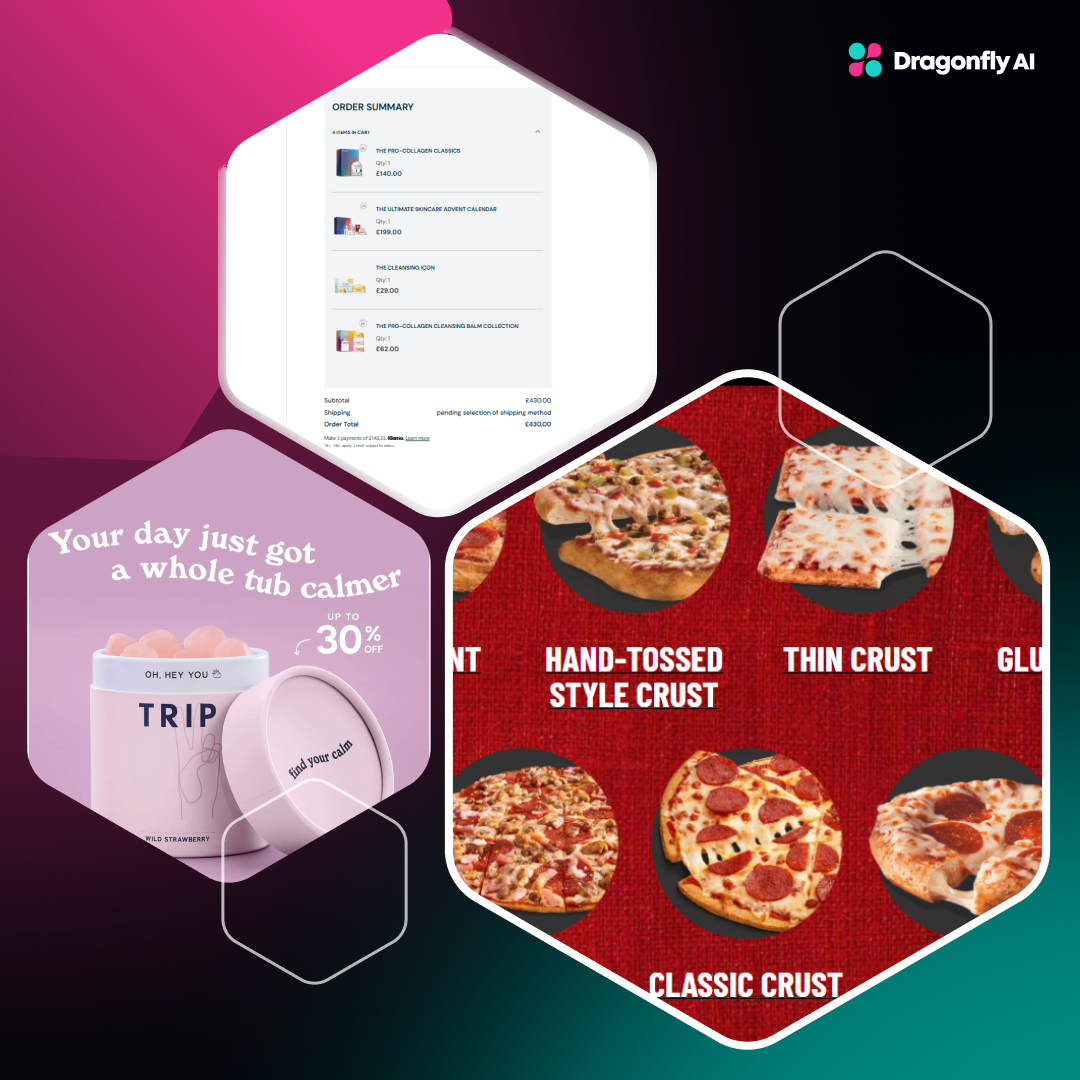In the intensely competitive business environment, crafting persuasive marketing campaigns is crucial for businesses to grow. However, many of these marketing campaigns fail to achieve the intended outcomes due to a lack of a consumer-centric approach.
When ineffective marketing strategies account for 22% of tech companies' failures, it highlights the importance of putting consumers at the center of your marketing strategy.
Brands must construct intricate profiles of consumer preferences using consumer insights and psychographic data that provide information about their beliefs, values, and objectives. This will enable them to fine-tune their marketing campaigns to match the interests and inclinations of their target audience.
Understanding the Pitfalls of Failed Marketing Campaigns
Failed marketing campaigns pose significant risks, both financially and in terms of reputation, leading to revenue loss and trust erosion. For instance, Burger King's controversial tweets on International Women's Day resulted in adverse reactions, emphasizing the importance of aligning marketing messaging with consumer-centric contemporary values and sentiments.
.png?width=1280&height=700&name=Blog%20image%201%20(9).png)
The Shift Towards Consumer-Centric Marketing
Consumer-centric marketing entails comprehending the customer's viewpoint, preferences, and behaviors to develop customized marketing strategies that genuinely connect with them. By gaining a deeper understanding of target audience, brands can tailor their products, services, and marketing strategies to meet customer needs and expectations effectively. This strategic alignment, rooted in consumer insights, drives customer satisfaction, fosters loyalty, and propels sustainable brand growth.
Several companies have successfully adopted consumer-centric marketing. For example, Starbucks is known for its efficiency in product feedback and loyalty programs; it uses mobile apps to reach its loyal customers with personalized offers. Notably, the campaign increased sales by 15%, demonstrating the potency of data-driven consumer-centric marketing.
The Power of Psychographics in Marketing
Psychographics are consumers' psychological and cognitive characteristics that provide better insights into consumer interests than demographic segmentation. Psychographic segmentation offers visibility into the values, motivations, lifestyles, interests, etc., of customers that affect their purchase behaviors and decision-making processes.
Brands can create language, images, and marketing channels that resonate with consumers more deeply by understanding the emotional and psychological drivers, resulting in more meaningful and effective campaigns.
Several case studies, particularly in the consumer-packaged goods (CPG) industry, highlight the effective use of psychographics in marketing. For example, the Coca-Cola marketing campaign "Share a Coke" was a highly successful example of psychographic marketing.
By personalizing its products with individual names, Coca-Cola created a sense of emotional connection, belonging, and identity with the target audience, driving consumer engagement, dialogue, and loyalty.
.png?width=1280&height=700&name=Blog%20image%202%20(11).png)
Leveraging Consumer Insights for Improved Marketing Performance
The ability to tap into consumer insights is a game-changer in the marketing world. These consumer insights act as a compass, guiding businesses to fine-tune messaging, optimize product offerings, and select the most effective channels for communication.
Once armed with valuable data, the key lies in decoding the nuances, patterns, and emerging trends. To craft successful campaigns, businesses must invest in tools and techniques for gathering comprehensive consumer insights.
Tools and Techniques for Gathering Consumer Insights
- Data Analytics Tools: To obtain comprehensive behavioral data on your audience, use platforms like Dragonfly AI that use AI to analyze user attention to improve the effectiveness of creative assets.
- Market Research Studies: Conduct online surveys and market research studies to get customer insights for upcoming marketing campaigns.
- Customer Reviews & Feedback: Examine customer opinions, product evaluations, and customer sentiment to learn about the preferences and behavior of your target market.
- Eye-Tracking Technology: Employing eye-tracking technology provides a unique perspective by monitoring visual attention, helping understand how consumers engage with visual content and advertisements.
- Social Media Analysis: Social media platforms offer real-time feedback and sentiment analysis, revealing consumer opinions, preferences, and trends expressed through online interactions.
Businesses must go beyond fundamental analysis and understand the "why" behind consumer behaviors. Then, tailor the brand strategies accordingly, identify what works, and recognize areas for improvement.
Measuring Marketing Performance
For a business to be successful, measuring marketing performance is essential as it lets marketers track their progress, assess the success of their campaigns, and make well-informed decisions.
Methods and Metrics for Measuring Marketing Performance
- Website analytics: Monitoring user activity, conversion rates, and website traffic can give important information about how well online marketing campaigns work.
- Engagement on social media: Monitoring social media platform indicators such as likes, shares, comments, and click-through rates helps determine audience interest and the success of campaigns.
- Predictive analytics and Customer Lifetime Value (CLV): By analyzing the predictive insights and assessing the CLV, businesses gain valuable information on both the quantity and quality of leads generated and the cost-effectiveness of customer acquisition strategies.
By identifying high-performing marketing initiatives, companies can increase their investment in those areas and improve or eliminate underperforming ones, guaranteeing a high ROI.
For instance, Spotify runs a successful marketing campaign; the platform uses consumer insights and psychographics to inform product development and create personalized playlists for its users.
.png?width=1280&height=700&name=Blog%20image%203%20(10).png)
Through data analysis of listening habits, preferred genres, and moods, Spotify curates playlists tailored to individual tastes. This strategy enhances user experience and functions as an effective marketing tool by keeping users engaged on the platform.
Crafting Persuasive Marketing Campaigns
Crafting a persuasive marketing campaign that truly resonates with your target audience involves a strategic process. Here's a step-by-step guide to help you harness the power of consumer insights and psychographics for a compelling campaign:
- Define your audience
Start by clearly defining your target audience. Use consumer insights to understand their demographics, behaviors, and, most importantly, psychographics. For example, find out what are their values, interests, and aspirations.
- Gather consumer insights
Utilize various tools and techniques, such as surveys, social media analytics, and customer interviews, to gather comprehensive consumer insights. Carefully examine their preferences, motivations, and pain points to build a detailed profile.
- Segment your audience
Based on the gathered insights, segment your audience into meaningful groups. Recognize commonalities within each segment to tailor your messaging more effectively.
- Align messaging with values
Craft your messaging to align seamlessly with the values and preferences of each audience segment. Speak directly to their needs, aspirations, and challenges, demonstrating a deep understanding of their perspective.
- Create compelling visuals
Leverage psychographics to create emotionally resonating visuals. Choose images, colors, and designs that connect with your audience on a visceral level, reinforcing your brand message.
- Tailor content to preferences
Develop content that caters to the specific preferences of your audience segments. Whether it's the tone of voice, storytelling style, or content format, customization enhances relatability.
- Utilize personalization techniques
Implement personalization in your campaign elements, such as personalized emails, product recommendations, or targeted advertisements. Tailoring the experience strengthens the connection with individual consumers.
By authentically evoking desired emotions and aligning content with consumer values, marketers can forge deep connections with their audience, fostering engagement and building lasting relationships.
Increase Impact with Consumer Insights
As we navigate the ever-changing marketing landscape, the knowledge derived from consumer behavior, preferences, and feedback feeds into business growth.
To enhance your marketing campaigns with advanced predictive analytics and creative optimization, take care to integrate cross-channel insights, A/B testing, and real-time feedback.
There are a multitude of tools available that can apply this additional layer of insights to your process, from predicting attention (key for furthering your mark with consumers) to compiling data for a better understanding of who your consumer really is.
At the crux of it, it is about building a relationship with your consumers so that they leap from customer to advocate and further your brand’s awareness out in the wild without you having to do a thing. How do you achieve this? But putting understanding the consumer at the very core of your marketing campaigns.


.png?width=1280&height=700&name=Blog%20image%201%20(9).png)
.png?width=1280&height=700&name=Blog%20image%202%20(11).png)
.png?width=1280&height=700&name=Blog%20image%203%20(10).png)
